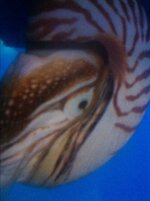Thanks
@gjbarord , I feel better that I made the right attempt but did not react quickly enough may have stopped treatment too soon. It did look like the antibiotic cream was having some effect in stopping or slowing the spread but I did not try it until over half the hood was impacted. The cream I use has a small amount of pain killer included and may have made him more comfortable based upon his coming to the front of the tank rather than hiding from me after I started applying it. I am also not sure he did not react to the epoxy since he died the day after I put the gorgonian in the tank.
I am going to try again. I hate buying one from a wholesaler but I choke up anytime I look at that tank. I am working with one of my food guys to get one of the ones he saw this week at his supplier.
Anything you can give me on treating problems would be extremely helpful. If it was parasitic, how would I know the difference or should I treat for both since I have no lab accessible? What would help that can be put in the display (I don't have a small chilled tank and the display is only for the naut) or did you use topical only.
Tetracycline/Oxytetracycline. Suggestions on quantity. I soaked his food in tetracycline (also have some old oxy on-hand but don't know if I should replace because of age). Should I also add it to the tank? I will buy new tetracycline as mine is quite old and may be very weak at this point. It did not seem to have any impact where I could see a difference when I used it on octopuses. I also have some (again old since this was on-hand for seahorses) gram-negative and gram-positive antibiotics(?) from that era. Useful? in tank or in food if yes.
Iodine. Would the iodine used for aquariums be appropriate or should I buy the type used for humans that is red? ADDITIONALLY, would it be beneficial to add a small amount to the water with each water change? I keep some on hand for crabs and shrimp but it is quite weak and I still use it sparingly.
Anti-fungal. Suggestions for an onhand cream? I know where to find human creams for athletes feet and jock itch (I suspect these are the same but have never checked the ingredients) but would they be effective for marine fungus. If not what do I need to find?
Cortisone. When the kids got finger infections, one of the doctor recommendations was to include using cortisone in the treatment (along with antibiotic cream). Any thoughts on this? I did not try it this time and hope not to have the issue again but want to be better prepared.

